
Know your family’s swimming strengths and skill levels
Swimming in the ocean requires more strength and skill than swimming in a pool (which is why it burns so many calories). So-so swimmers may struggle when confronted with waves and currents, so unless you feel confident that you or a member of your family can handle the surf, stick to the shoreline. Swimming is great exercise, too. So make sure you avoid these common summer workout dangers when you swim.

Enter the water feet first
Save diving is for designated pools—not the beach. According to the United States Lifesaving Association, people face serious injuries every year because of diving headfirst into ocean water. This tip applies to people of all ages. Kids and adults need to follow these 12 water safety tips adults don’t follow—but should.
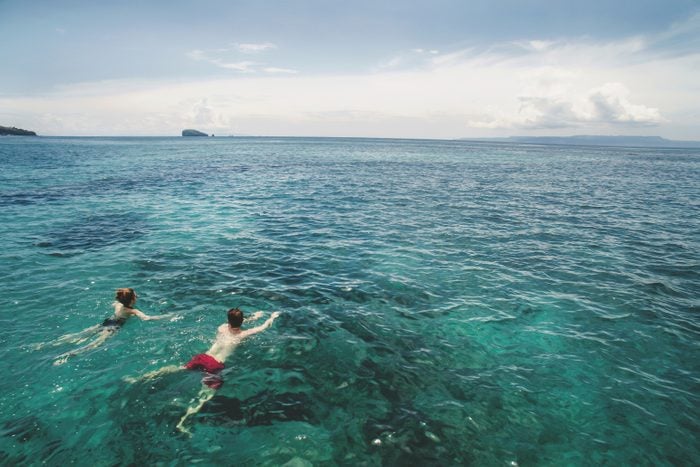
Use the buddy system
The old chestnut your day camp counselor preached before every free swim session still holds true. Never go swimming alone, especially in the ocean.
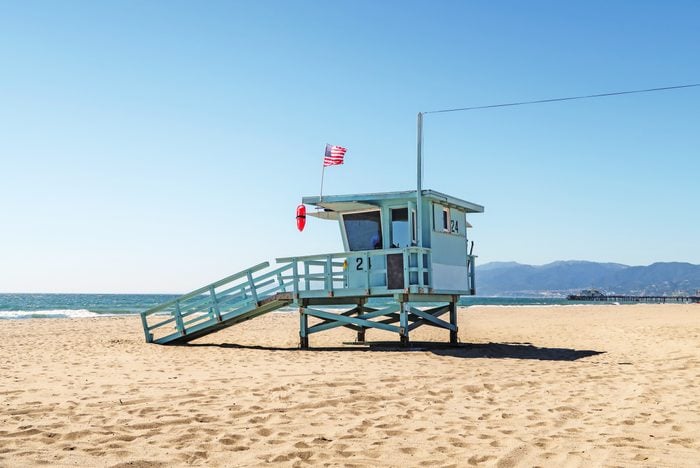
Stay in sight of the lifeguard
Lifeguards are there for a reason, and it’s not just to hang out on a chair looking hot in a swimsuit. When swimming at the beach, go when there’s a lifeguard on duty and stick to the area between the flags. Don’t miss these life-saving tips from real lifeguards.
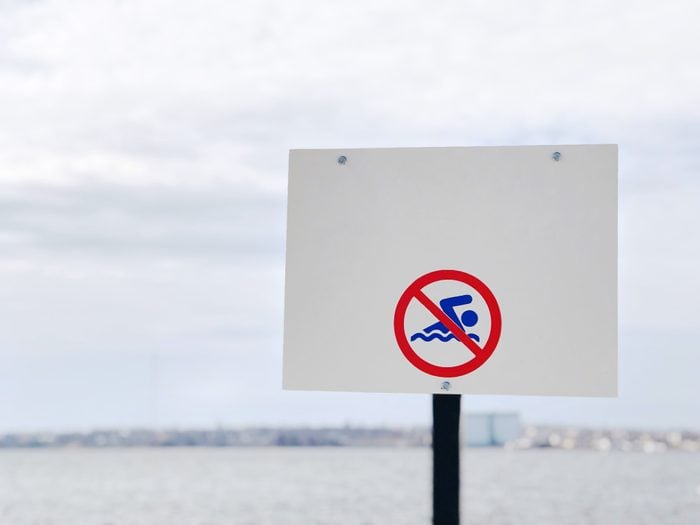
Read the safety signs
Safety beach signs are there for a reason—to inform and keep you safe. Read these signs before entering the beach, so you know of any warnings or dangers. It takes just a few seconds to browse the signs for any information you might need, and it’s one of the top tips from lifeguards.
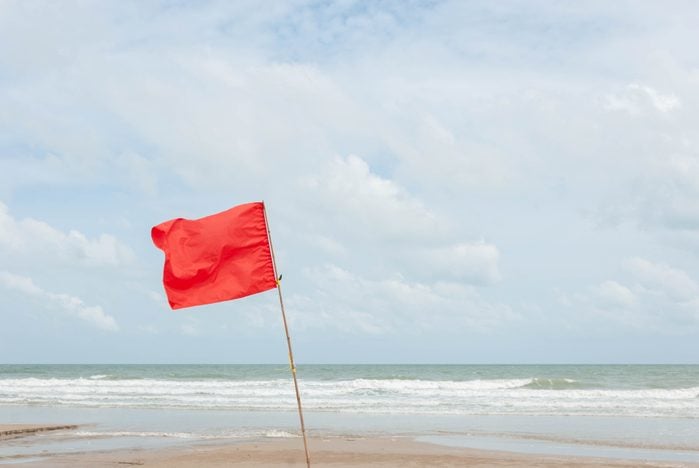
Learn the meanings of the beach warning flags
Green = Low hazard (exercise caution)
Yellow = Medium hazard (moderate surf and/or currents)
Single Red = High hazard (high surf and/or strong currents)
Double Red = The beach is closed to the public
Purple = Dangerous marine life (but not sharks), flown with either Red or Yellow
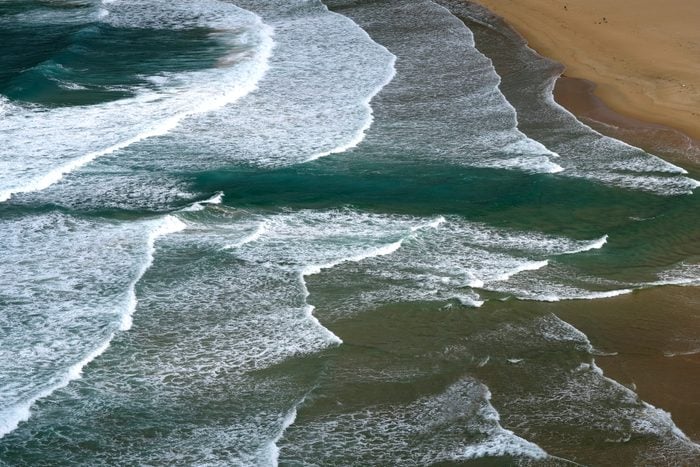
Understand rip currents
Rip currents, often mistakenly referred to as “riptides” or “undertow,” are very strong currents of water that can be as long as 2,500 feet but are generally no wider than 30 feet. These powerful narrow currents move along the surface of the sea and usually occur at the points of the shoreline where the ocean is deepest. Rip currents can sometimes be seen from shore when they interfere with the ebb and flow of a wave. Once you get caught in one, it can be extremely difficult to get out, especially for a weaker swimmer. To escape a rip current, curb your instinct to swim against it and head to shore. Instead, swim parallel to the beach rather than directly toward it. Eventually, you’ll swim out of the current and will be able to turn and swim to shallower water. Check out this guide to exactly what to do if you’re caught in a rip current.

Always keep your phone nearby
Should you or someone nearby be in need of help, it’s always a good idea to be connected. Stick the phone in an easy-to-reach place in your bag—along with your SPF, of course—and hope you only need to use it to take vacation photos.
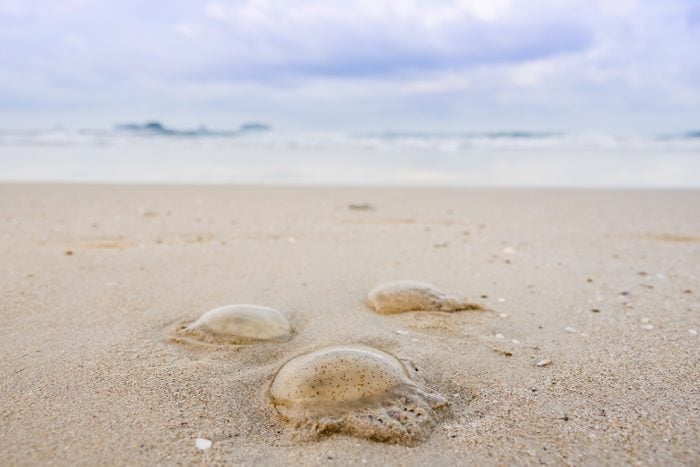
Look out for sea creatures
Coming in contact with a shark at the beach à la Jaws is pretty rare, but jellyfish and stingrays are a different story. Don’t touch—or even follow—one if you see any in the water; even a dead jellyfish can still sting you. Shuffle your feet in the water to avoid stepping on an unsuspecting critter. If anyone in your party gets stung, notify a lifeguard and seek medical attention right away. Check out the right way to treat a jellyfish sting—that has nothing to do with peeing.
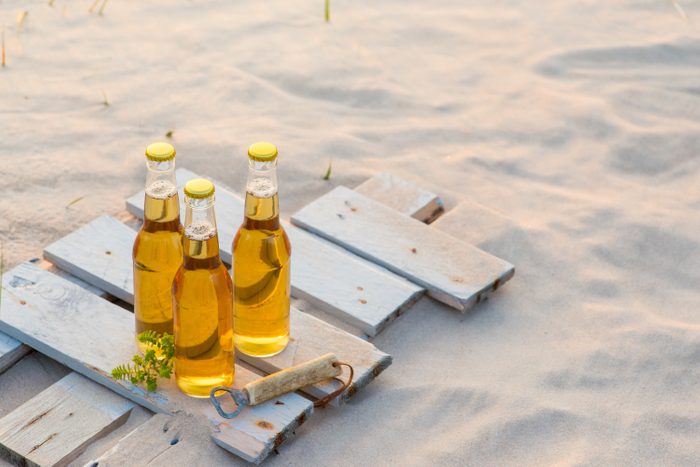
Swim sober
Relaxing on the beach with a cold beer in your hand sounds like a perfect vacation scene. Trying to swim after one too many, though, could end in disaster. Alcohol impairs your judgment, so you may not be able to notice a dangerous situation in the water, much less get out of it. Know your limits when you drink, and listen to your friends if they say you’ve had enough.
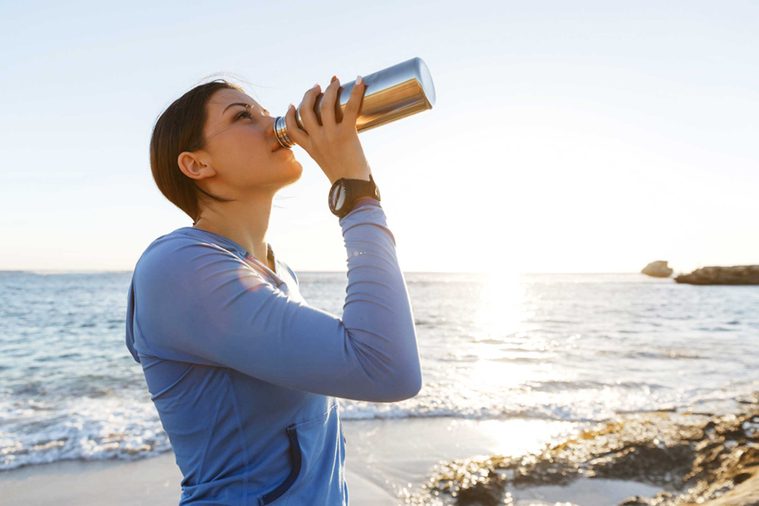
Hydrate, hydrate, hydrate
If you’re not drinking enough water and not getting enough shade during a day in the hot sun, you’re putting yourself at risk of heat stroke. Know the symptoms: nausea; headache; confusion; a rapid heartbeat; and hot, bright red skin. Your dog is equally at risk, so make sure he doesn’t get overheated either. Dehydration is one of the very real summer health dangers you’re probably ignoring.
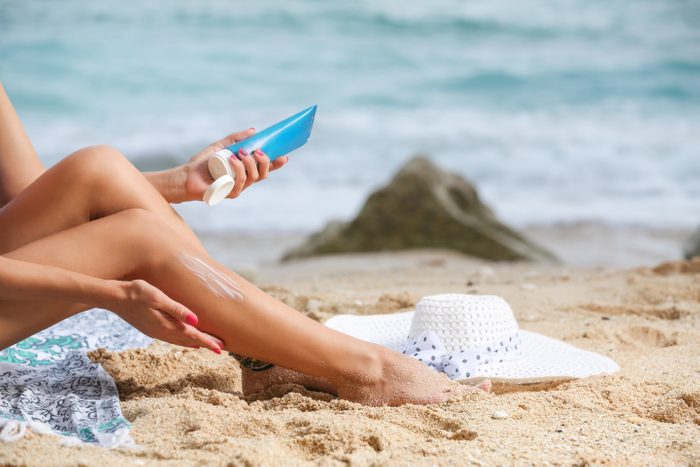
Apply and reapply sunscreen
Sunscreen use is a no-brainer during sunny days at the beach for skin protection. People forget, however, to reapply sunscreen throughout the day—especially after swimming. According to Y. Claire Chang, MD, of Union Square Laser Dermatology, people should apply 1 ounce (about the size of a shot glass) of a broad-spectrum sunscreen with SPF 30 or higher—every two hours. “Reapplication is just as important as applying it in the morning,” she says. Even if you are at the beach on a cloudy day, you can still get a sunburn. According to the Mayo Clinic, around 80 percent of the sun’s UV rays can pass through clouds and to your unprotected skin.
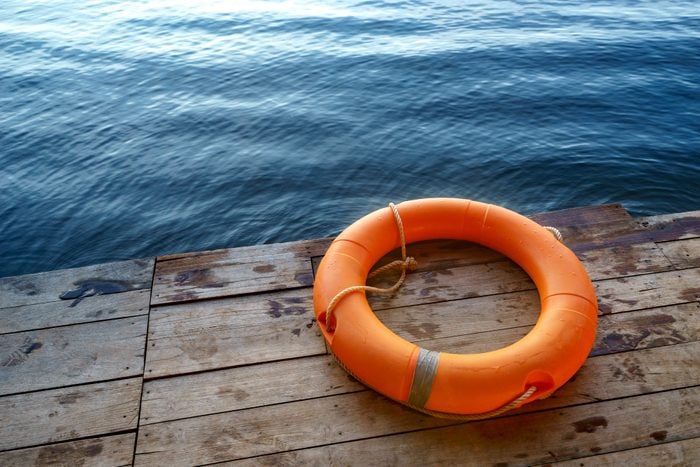
Know what to do in case of an emergency
There are a few steps to remember in case of a water emergency, according to the American Red Cross. Check the water if a child is missing as seconds count in preventing death or disability. Always alert a lifeguard and ask someone to call the EMS. CPR knowledge is also extremely valuable. You can get a certification and learn the techniques from the American Red Cross. Brush up on your familiarity with these 7 CPR steps everyone should know.
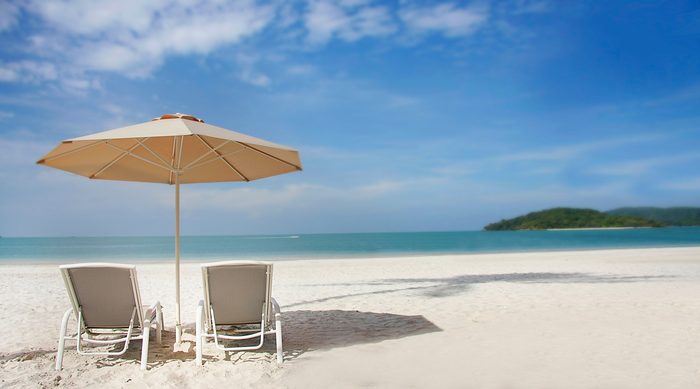
Find some shade
Protecting yourself from the sun and heat doesn’t stop at hydration or sunscreen. Heat exhaustion and heat stroke are cousins with sun poisoning which causes a range of symptoms from rash and nausea to dizziness and confusion. Protecting yourself from all of the above also requires shade from the sun and heat. Umbrellas and beach tents are helpful. Even if you feel OK, take a break and lounge under the umbrella to avoid these heat health issues.
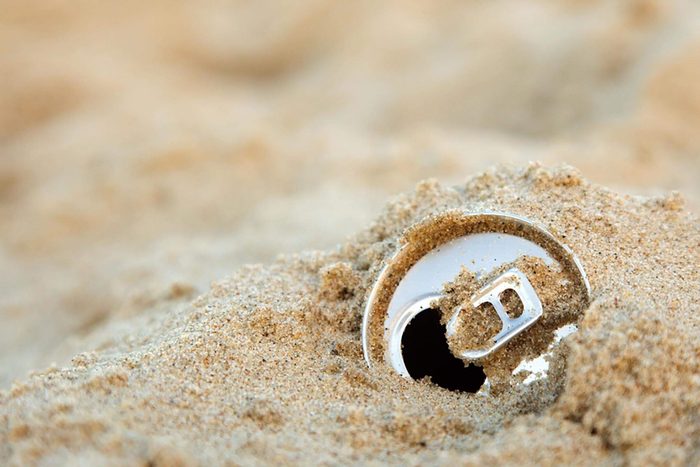
Throw your trash out properly
Throwing your trash out in designated bins is safe for both the beach environment and for visitors. Pick up after yourself and avoid littering as broken glass and plastics could harm barefoot beachgoers. These 10 gorgeous beaches with the clearest water in the world are motivation for keeping all beaches clean.